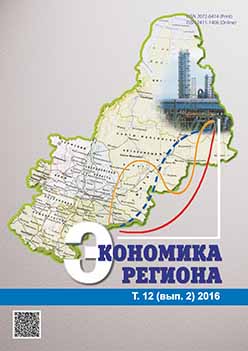Comparing Small Area Techniques for Estimating Poverty Measures: the Case Study of Austria and Spain
Comparing Small Area Techniques for Estimating Poverty Measures: the Case Study of Austria and Spain
Author(s): Federico Crescenzi, Gianni Betti, Francesca GagliardiSubject(s): Economy, Geography, Regional studies
Published by: Институт экономики Уральского отделения Российской академии наук
Keywords: small area estimation; poverty; EU “headline targets”; regional level; NUTS-2; inequality; SEBLUP; cumulation; SILC; Austria; Spain;
Summary/Abstract: The Europe 2020 Strategy has formulated key policy objectives or so-called “headline targets” which theEuropean Union as a whole and Member States are individually committed to achieving by 2020. One of thefive headline targets is directly related to the key quality aspects of life, namely social inclusion; within thesetargets, the European Union Statistics on Income and Living Condition (EU-SILC) headline indicators atrisk-of-povertyor social exclusion and its components will be included in the budgeting of structural funds,one of the main instruments through which policy targets are attained. For this purpose, Directorate-GeneralRegional Policy of the European Commission is aiming to use sub-national/regional level data (NUTS 2).Starting from this, the focus of the present paper is on the “regional dimension” of well-being. We proposeto adopt a methodology based on the Empirical Best Linear Unbiased Predictor (EBLUP) with an extensionto the spatial dimension (SEBLUP); moreover, we compare this small area technique with the cumulationmethod. The application is conducted on the basis of EU-SILC data from Austria and Spain. Results reportthat, in general, estimates computed with the cumulation method show standard errors which are smallerthan those computed with EBLUP or SEBLUP. The gain of pooling SILC data over three years is, therefore, relevant,and may allow researchers to prefer this method.
Journal: Экономика региона
- Issue Year: 12/2016
- Issue No: 2
- Page Range: 396-404
- Page Count: 9
- Language: English

